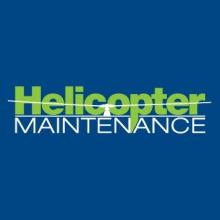TSA Screening for Air Ambulance Personnel
This has recently been an interesting topic being discussed on the NBAA Part 135 discussion thread regarding TSA screening for air ambulance personnel. There are many opinions on this subject, depending on what your perspective is. In this case, my feelings are that the “screening” of air ambulance medical personnel is not warranted, and does not accomplish anything to promote safety of flight. What next? If there is a fire in the aircraft hangar, do we need to screen the arriving firefighters before we let them do their jobs? What about bus drivers and train engineers? Where do we draw the line?
I have mixed emotions on the subject of screening people before they board an aircraft. My oldest son is a pilot with Southwest Airlines. We agree on some TSA policies and disagree on others. The issue of screening flight crew seems to be the responsibility of the aircraft operator and not the TSA. Due diligence on the part of the operator regarding their personnel is not out of line. Yes, there may be an increase in operational costs, but that is the price of being in business. There is a big push industry-wide towards the concept of a Safety Management System (SMS). If safety is everyone’s concern, then this too is a safety issue and is everyone’s concern. If we were to write something about screening for air ambulance maintenance personnel, I would remind everyone of the following.
• Many of the TSA screening procedures in place today are the result of an individual’s attempt to blow up a flight coming in to Detroit from a foreign country more than a year ago.
• These procedures were put in place as a reaction to this event to better detect and avoid the possibility of an explosive device being brought onboard an aircraft.
• Typically air ambulance response personnel fly on an aircraft, while maintenance personnel do not.
• Those personnel who fly on the mission and those who maintain the aircraft have the skills and intelligence to bring down an aircraft in-flight without the use of explosives.
• Having said that, why bother with screening them? They do not need to bring explosives on to the aircraft to destroy it in flight.
My wife and I just returned from a trip to visit family in Denver. Going through the security lines at both Phoenix and Denver was no big deal and security appeared to be business as usual. I did not witness any pat downs, nor did I hear any travelers complaining about the TSA. Maybe after I go through a pat down I might feel differently about it. I am more concerned about illegal immigration than I am about explosive devices being smuggled onto an aircraft.
In closing, when it comes to government agencies and what they do or do not do for us, the traveling public, there will always be room to complain. What the TSA is trying to do has our safety interests at heart and how they accomplish that will always leave room for discussion. The TSA personnel on the front lines doing the work are not the same as those making the policies. If we want to vent and express our disagreement with TSA procedures, let’s do so at the proper level and to the proper people and not take it out on those left to actually perform their jobs.
This subject is a policy decision that is being considered by those who unfortunately are not fully in tune with the air ambulance industry. If you are in the air ambulance industry and want your voice heard on this subject, please contact the NBAA, the FAA and your congressional representatives.

